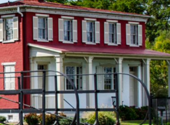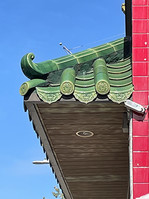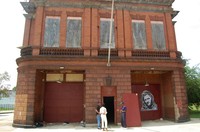Historic Preservation Capital Grants
Are you interested in making repairs or improvements to a historic property? Register now to attend a webinar on the Historic Preservation Capital Grant Program in January or February 2022! Attendees will learn about the application process, eligibility criteria, deadlines, match requirements, and more. Click this link to register.
|
|
 |

Maryland Heritage Area Program Grants
Join Maryland Heritage Area Authority staff this January to learn about funding opportunities in the upcoming grant round. Staff will host a webinar on January 5th at 2pm and Q&A sessions throughout the month. To learn more or to register, visit the link below: https://forms.gle/GL5Gvw7PyKkJA7Km9
|
We Want to Hear from You!
|
|
 |

Help Protect Maryland's Historic African American Cemeteries
|
By Marcia Miller, Chief, Office of Research, Survey and Registration (assisted by research from Historic Annapolis)
Over the past five years, MHT has worked closely with Historic Annapolis on a state-of-the-art restoration of the James Brice House, named for the young lawyer and planter who inherited the project from his father. Built between 1766 and 1774, the house is a remarkable five-part Georgian dwelling with a large, two-story center block flanked by hyphens and wings. Designated a National Historic Landmark in 1970 - the National Park Service’s highest level of recognition - the house features rare surviving historic fabric of both elegant architectural features and living spaces for the building’s enslaved inhabitants.
MHT and Historic Annapolis have based the restoration of the building on a rigorous, hands-on investigation of intact materials and scrupulous study of the extraordinary account book left by James Brice, which lists both construction materials and workers. An expert team of architects, architectural historians, conservators, and craftsmen will restore the house to its 1774 appearance.
The second floor of the east wing served as living quarters for enslaved people at the Brice House. To interpret the spaces where they lived, on-going work will remove twentieth-century modifications while restoring the original floor level (creating a low 6-foot 4-inch ceiling height), stabilizing early plaster walls, and conserving the dormer windows, authentically highlighting this rare early living space for enslaved people.
The restoration presents a unique opportunity to understand and interpret the full history of the house, especially the stories of those enslaved and free workers who labored on the property. Current work focuses on the east wing, which housed the kitchen and washhouse on the first floor, and quarters for the enslaved workers on the second floor. A remarkable amount of surviving early fabric, especially on the second floor, makes this wing a rare authentic example of early urban service space. Conservation of the intact wall plaster and baseboard, and restoration of missing elements based on existing evidence, will allow this space to accurately interpret the stories of those people who lived and labored here. Artifacts found inside the knee walls include straight pins, hair pins, walnut shells, buttons, corncobs, and creamware, further illuminating the daily experiences of these enslaved men, women, and children.
 |
This photo shows the original floor level and plaster wall sitting about two feet above the existing floor. Note the black-painted baseboard and pieces of the intact plaster wall above.
According to Maryland’s 1783 tax list, Brice enslaved seven individuals who lived and worked in his Annapolis household. At his death in 1801, Brice’s inventory listed 11 enslaved people—Tom, Nan, Jenny, Henny, and Doll, and children, Isaac, Nathan, Kitty, Caroline, Jesse, and Henny—who may have lived either in this space, the attic, or over the carriage house in the opposite wing. These individuals may have been part of a larger kinship network, as Brice’s inventory noted an additional 40 enslaved people statewide at his other properties.
The Brice House restoration project provides an exceptional opportunity to teach about the lives of enslaved and free workers in Annapolis. Historic Annapolis will share the collective stories of the enslaved people who lived and worked there, once the house reopens to visitors.
ICYMI: African American Heritage Preservation Program Grants Awarded
MHT and the Maryland Commission on African American History and Culture recently awarded thirteen AAHPP grants totaling $1,000,000. These grants offer assistance to awardees in their sponsorship of projects involving acquisition, construction, or the rehabilitation of sites related to African American heritage in Maryland. Click here to read the full announcement.
|
|
 |
|